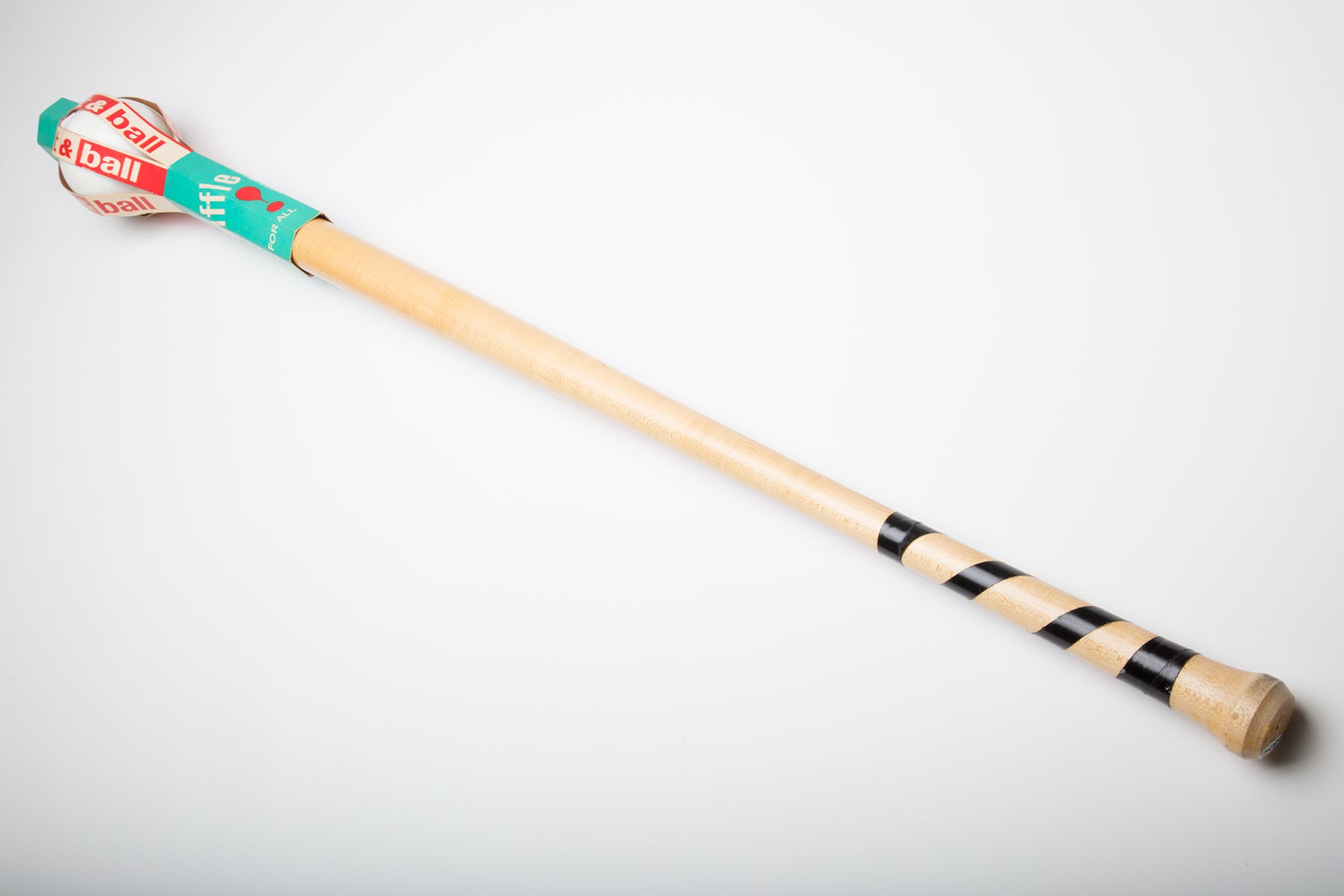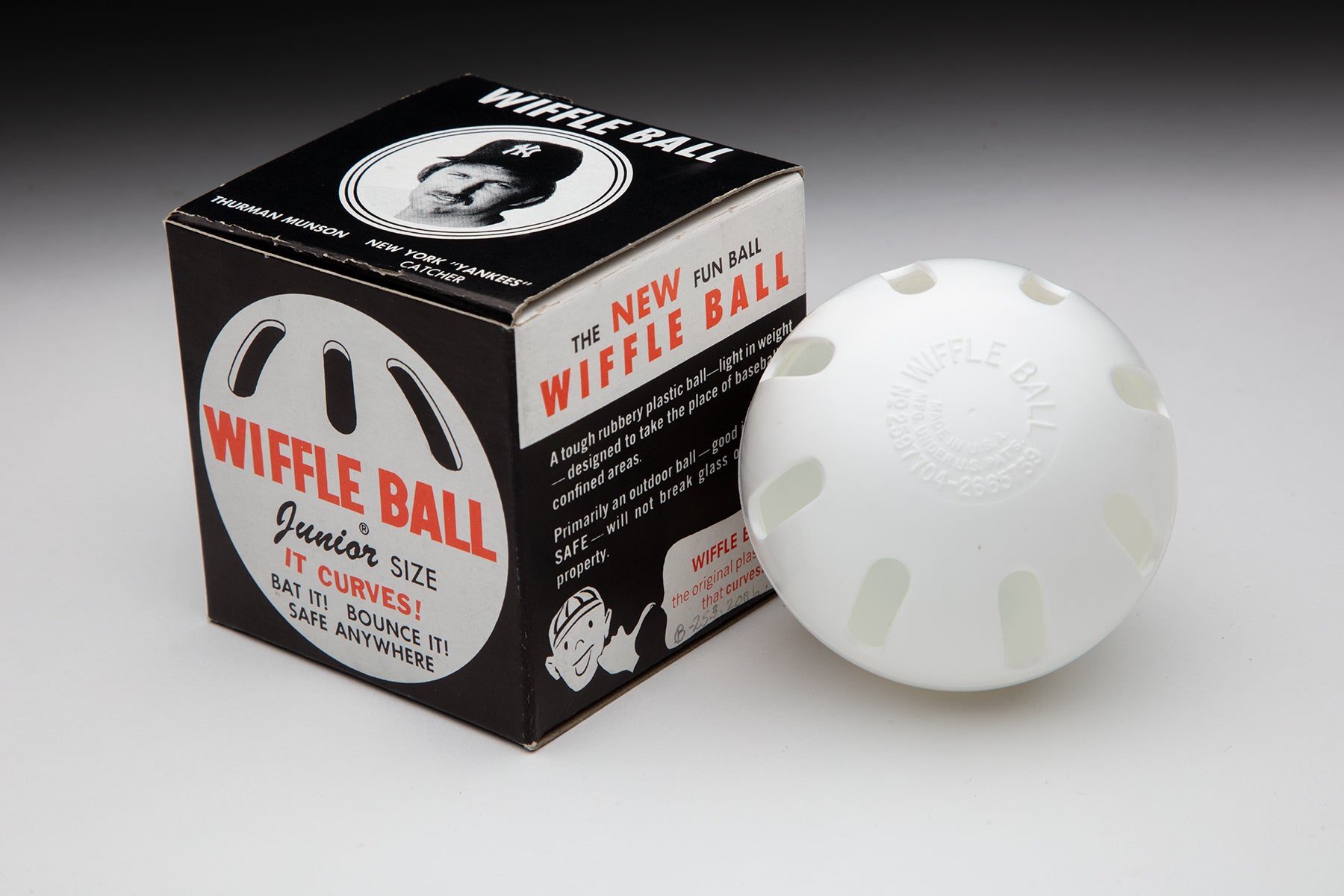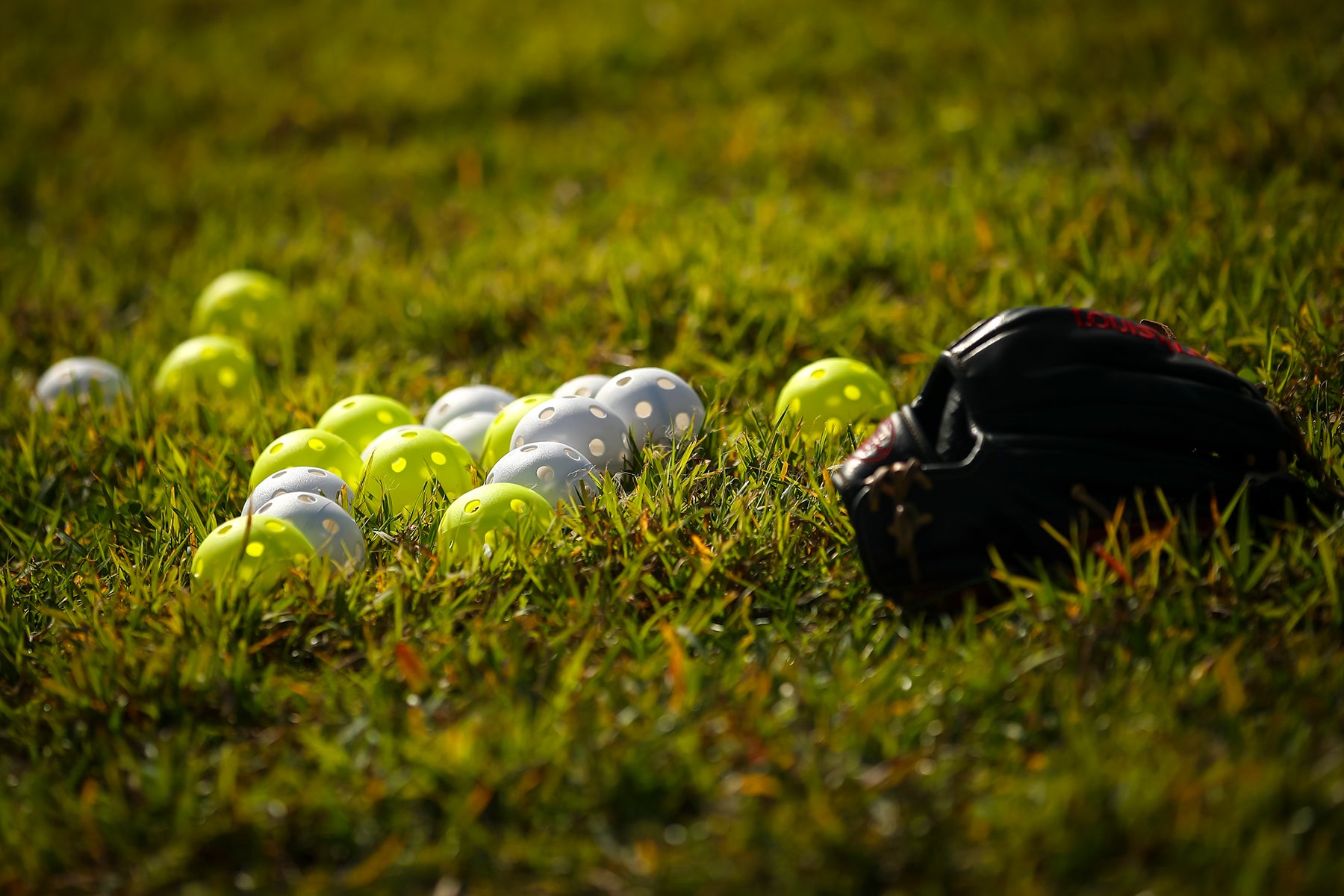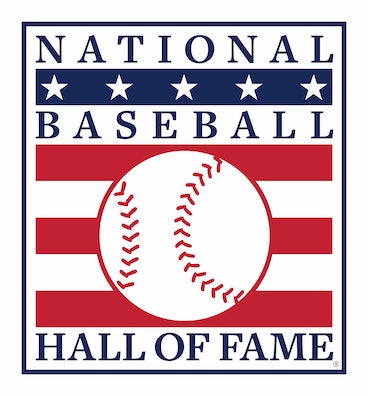No Whiffs Here: The History of the Wiffle Ball
The story of the most successful toy baseball traces its beginnings to a summer afternoon in 1953 when two boys played an improvised version of the National Pastime – using a plastic golf ball and a broomstick handle – in a suburban backyard.
One of the boys, 12-year-old David A. Mullany, liked the movement the ball’s perforations allowed him to get but complained to his dad, David N. Mullany, a former semipro pitcher, that throwing it turned his arm to jelly. The elder Mullany – who was out of work and had cashed in his life insurance to keep up with the mortgage payments on his Fairfield, Conn., home – saw possibilities, envisioning a plastic ball the size of a baseball that a 12-year-old could make break with ease.
He obtained from a friend some hollow plastic spheres originally intended to package perfume and, along with his son, experimented with various patterns cut into them until they came up with a design that had eight oblong holes on one half. The size of a baseball, it was – at two-thirds of an ounce – only an eighth as heavy. (A regulation baseball weighs 5 to 5.25 ounces.)
They called it the Wiffle ball for the way it made batters miss (removing the H from “whiff” to make it uniquely theirs).
Today, their invention remains a staple of backyard play – and has a home at the Hall of Fame.

The elder Mullany took out a second mortgage to finance the production of a batch of his proprietary plastic balls, loaded them into the family station wagon and drove over to a local diner, where he set up shop in the parking lot, peddling the original Wiffle ball for 49 cents apiece. The following year, 1954, they moved their sales location into the city, selling the balls from a spot on Canal Street in Lower Manhattan. It wasn’t long before Woolworth took an interest and started selling Wiffle balls.
By 1959, the Mullanys were operating their own factory in a small, two-story brick building in Shelton, Conn.
In the ’60s, the company produced a black-and-white television advertisement featuring Whitey Ford in his backyard modeling the grips kids could use on a Wiffle ball “to throw a curve like a major leaguer.” A man offscreen marveled: “It curves and it’s so safe. . . You can bat or throw it anywhere, indoors or out” (no doubt endangering many a household lamp and annoying an untold number of mothers).
The company negotiated deals with MLB players to use old photographs of them on their packaging. Soon faces of the game’s stars – including Hall of Famers Lou Brock, Carlton Fisk, Tony Pérez, Jim Rice, Tom Seaver, Mike Schmidt, Willie Stargell and Ted Williams – adorned individual Wiffle ball boxes. Those boxes have become collector items sold on eBay, with or without the ball inside.
A generation of American kids grew up grooving Wiffle balls in backyards, but the game leapt to another level in 1977 when a college baseball player living in Hanover, Mass., named Rick Ferroli began a Wiffle league with seven of his buddies playing games in the replica Fenway Park he’d constructed. The league grew to eight teams, then into a week-long tournament hosting teams from outside Hanover, and finally, in 1989, to a national tournament with 32 teams.
Meanwhile, several states away in 1980, Jim Bottorff, a 19-year-old working at a summer camp in Mishawaka, Ind., organized Wiffle ball games for his campers. Seeing the fun they had inspired him to put on an eight-team tournament dubbed the World Wiffle Ball Championship. Its popularity has grown steadily over the past four decades. In 2019, 60 teams traveled from 12 states to take part.

Interest among adults playing Wiffle ball across the country has similarly exploded during that time. While nobody has been able to take an accurate census, estimates put the number of leagues in the country somewhere between 80 and 100. Some of them have been around long enough to have established their own Halls of Fame.
There are basically three levels of Wiffle ball leagues, each determined by how hard the ball is pitched. Slow pitch dictates that pitches must have an arc, but pitchers are still able to throw sweeping curves and jittery knuckleballs. Batters use the traditional yellow Wiffle bat, which resembles a skinny plastic fungo, and in the absence of called balls and strikes, can wait for a hittable pitch.
“We want to make sure anyone can play, from age 10 to 60, in our tournament,” says Nate Hansen, commissioner of the World Wiffle Ball Championship, which is a slow-pitch event.
Medium pitch allows pitches to be thrown up to 50 mph, which increases the tools in a Wiffle ball hurler’s arsenal, but still allows for batters using skinny bats (less than 1 3/4 inches in diameter) to put the ball into play. A slightly higher skill level is generally on display from pitchers and batters.
Fast pitch is where Wiffle ball becomes otherworldly. Some leagues allow pitchers to scuff balls (on concrete, with cheese graters, using sandpaper, etc.) which gives them more movement and better control. The balls shimmy, dance, wiggle, jump and dart with such gusto they make an R.A. Dickey knuckleball appear straight by comparison. Thrown from a rubber 45 feet from the plate at speeds occasionally topping 90 mph, they give batters reaction time equivalent to what a major leaguer would have to a 130-mph fastball thrown from a standard mound.
Even for batters using thicker bats (up to 2 3/4 inches diameter) with graphite barrels, many of the pitches are “virtually unhittable,” says Tim Cooke, director of the fast-pitch Mid Atlantic League and the United Wiffle Ball National Championship. Not surprisingly, pitchers in the fast-pitch leagues rack up numerous strikeouts and frequent no-hitters.
While pretty much anybody who can swing a bat can compete at the slow-pitch level, and anybody who can hit a decent curve can play medium pitch, fast pitch tends to attract those whose baseball careers ended before they were ready to give up the game – whether that was after high school or in the minor leagues.
“Their thinking is, ‘I want to be challenged like I was when I was in college, facing a guy who’s going to throw a lot of stuff,’” Cooke says.

Still, Wiffle ball games at all levels resemble those improvised by kids. In leagues without umps, disputes must be resolved by the players. There are usually only four or five players to a side, so everyone gets to see more action. Ghost runners and pegging a runner for an out are all part of the game.
“Wiffle ball is a backyard game taken to the next level,” Cooke says. “It’s the camaraderie and community that bring people together.”
And that’s all part of the appeal. Hansen, 38, played organized baseball into high school, but at 15 became more focused on playing Wiffle ball with his childhood buddies. In August, he teamed up with them in his 29th World Wiffle Ball Championship.
“We decided this is going to be our thing, playing this kid’s game and having a blast doing it,” Hansen says.
While some tournaments offer cash prizes where the winning team can take home as much as $3,000, for most champions there’s only personal glory – and, at the World Wiffle Ball Championship, their name on a trophy shaped like the World Series hardware with Wiffle Bats standing in for the flags.
Although Wiffle Ball Inc. remains in the Mullany family – today run by the elder Mullany’s grandsons, David J. and Stephen Mullany – the plastic ball with its signature eight oval cuts has come a long way since its inception in the family’s backyard. David J. won’t say how many Wiffle balls they sell each year other than that it’s “millions and millions.”
“People play for love of the game,” Hansen said. “My wife’s my first love, Wiffle ball is my second.”
John Rosengren is a freelance writer from Minneapolis.
Memories and Dreams
This story previously appeared in Memories and Dreams, the award-winning bimonthly magazine exclusively available to supporters of the Museum's Membership Program.
